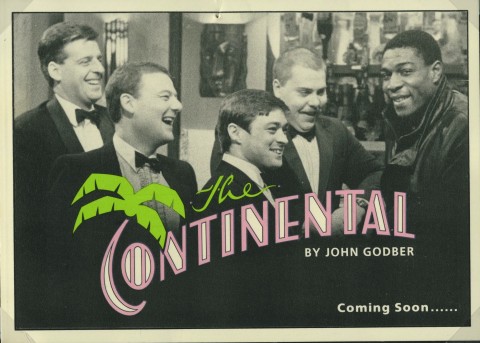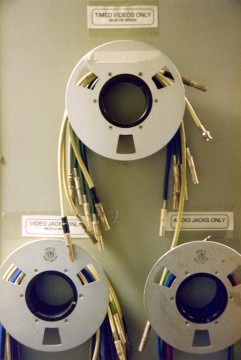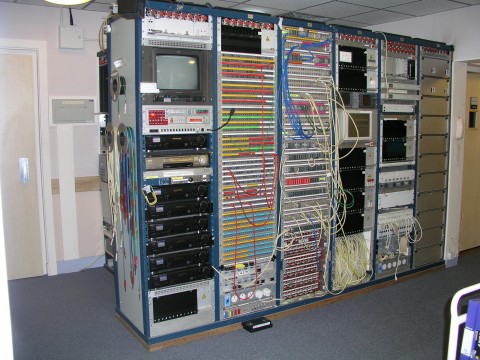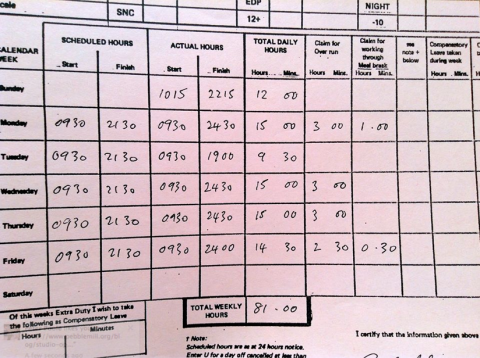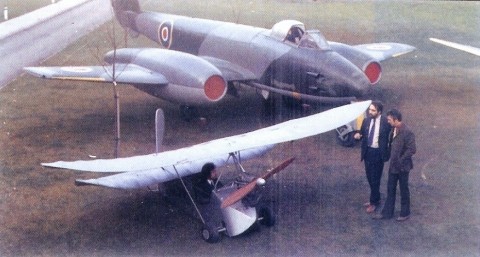
Photos by Joanne Kenyon, no reproduction without permission.
(This Good Morning with Anne and Nick sweatshirt was worn by the band of Community Service Volunteers who manned the phone-lines on the daily live show. Good Morning went out on weekdays between 1993-96. They were sometimes seen in shot, hence the need for the sweatshirts. The hotliners, as they were known, took the calls from viewers, and would then put selected viewers through to the studio phone-in, to talk to presenters Anne Diamond and Nick Owen, as well as TV Doctor, Mark Porter, or Agony Aunt, Deirdre Sanders etc. The sweatshirts were obviously made to last, as this one is still in former hotliner, Joanne Kenyon’s wardrobe, almost twenty years on!)
At an age when you were fresh and new and itching to get into television production, with no idea how to get there, if you were lucky enough, you gained a voluntary position with CSV Media.
The CSVers would turn up every morning at the crack of dawn to Pebble Mill, walk through Reception, down the corridor with all the celebrity pictures, past the ‘Quiet Please’ signs on the Studio doors and would make their way to the Good Morning Hotline office, next door to the main production office.
After the obligatory cuppa and breakfast in the Crush Bar you would hear Maggie’s dulcet Northern Irish tones shouting ‘logooon…’ which would signal that you would spend the next few hours speaking to members of the public about whatever the topic of the day was. You would filter calls and put them through to the Studio floor and when the cameras came to the Hotline (with the live show broadcasting the telephone number) you would concentrate on not looking into the camera and be on the phone looking extremely busy (well after all your Mum was seeing you on TV!). After the excitement of the live show was over you would spend the afternoon researching and answering viewer’s questions and calling them back with the information you had found.
It was a fun time, everything was new and exciting, you would see celebrities in the corridors. I will never forget Dale Winton collapsing in the chair next to me claiming he was shattered after his ten minute interview; Lennox Lewis or Gary Lineker answering the phones with us and sending most of the girls (and some of the boys) in the room giddy! The celebrities are too many to mention. I have very special memories of looking after Bob Monkhouse, a real gentleman.
Despite making life long friends, lots of giggles, feeling part of something important and having great fun in the Pebble Mill bar, it was a vital, amazing and necessary start in your TV life. You were given opportunities that would not exist anywhere else; assisting in the hospitality; meeting the hard working production team, assisting with their research and learning from what they did. It was valuable for your career and an amazing springboard into the life of live television.
You weren’t paid, worked long hours and at times it was extremely difficult, especially if the subject of the day was one that devastated the lives of the people calling in. At the end of my CSV year I had made great friends, created great memories, gained the experience to be recruited by a local Production Company ….and not forgetting, I came away with an extremely memorable and now super cool and retro sweatshirt – what a great time in my life!
Joanne Kenyon
